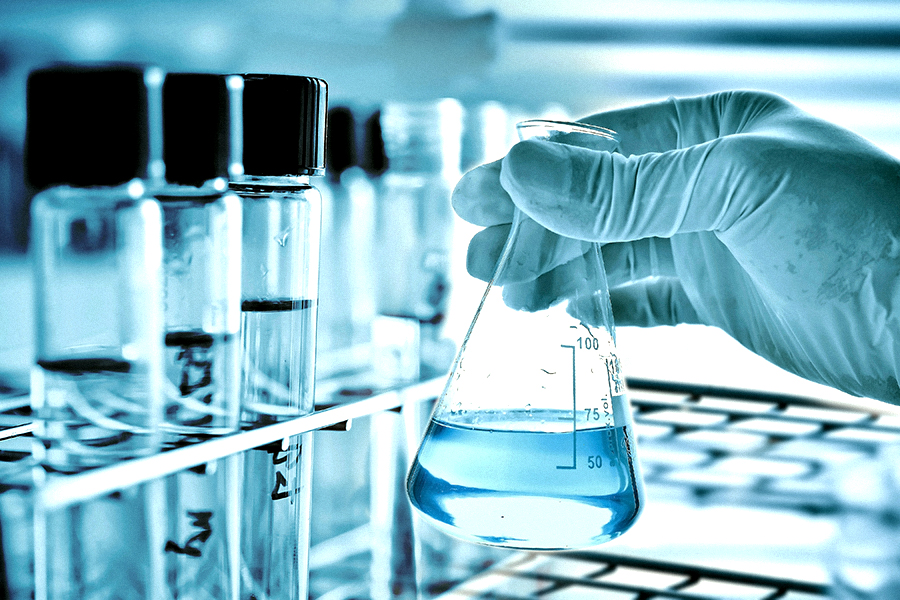Chemical Analysis
READ TIME

Today analytical chemists have a wide range of techniques available for the characterisation and detection of specific analytes within given substrates and on a given surface. Several methods have been developed to assess the relationship between the bioefficacy of a treated substrate and the surface concentration of the insecticide.
IVCC are investigating these various surface chemistry techniques, as well as chemical analyses, in order to determine total and surface bioavailable Active Ingredient (AI) content, as well as the distribution within a given substrate. This work underpins a lot of the Research and Development Portfolio.
Matrix-Assisted Laser Desorption/Ionization (MALDI)
Matrix-Assisted Laser Desorption/Ionization (MALDI) is an ionisation technique that uses a laser energy absorbing matrix to create ions from molecules with minimal fragmentation. This technique has great potential in determination of the spatial distribution of bioavailable AI on a given surface as well as XYZ spatial data of the distribution of AI within the matrix, and mass spectral identification of primary and potential degradation products.
The Imaging MALDI-ToF MS combines QuanTof technology within a streamlined imaging workflow to deliver accurate imaging analysis. Proof of Concept (PoC) examples demonstrated potential for using this technique in determining the spatial distribution of AI and its concentration on a given surface, however further method development will be required in sample preparation and higher throughput analysis of samples.
Scanning Electron Microscopy (SEM)
Scanning Electron Microscopy (SEM) can be used for physical and quantitative characterisation of 3D structures. The technique uses a electron beam to scan the surface of the sample and the electrons reflected from the sample form an image. This offers a real view of the physical structure in high resolution (3nm).
In addition, for this project, SEM can offer quantitative analysis with the use of EDS (X-rays) for elemental analysis of a selected area having more accurate results when X-rays penetrate at depth 1-2µm. This area could be prepared in high precision using a DualBeam™ system, that incorporates SEM and Focused Ion Beam (FIB), technique in which the sample can be cut through creating a cross sectional sample for the SEM. The sample can be used to observe the inside physical structure in addition to the composition of ingredients beyond the net’s surface by using EDS analysis.
X-ray Diffraction Technique (XRD)
The X-ray Diffraction Technique (XRD) can be used to identify if a sample is amorphous or crystalline. The X-rays diffract from lattice planes in a crystalline sample and if those diffractions are in parallel to each other the diffracted signal results in high intensity peaks. If the sample is amorphous the planes are not in parallel and therefore result in no peaks.
This technique is a straight forward way to identify whether the AIs are crystalline. Additionally, based on the reference database, the peaks can be linked to known phases of compounds.
Atomic Force Microscopy (AFM)
Atomic Force Microscopy (AFM) can be used as an alternative imaging technique for mapping the topography of the sample. The technique is ideal for non-conductive samples that charge up in electron microscopes. This technique operates in atmospheric pressure, offering a 3D image, even for ingredients that exhibit low adhesive strength to the net.
X-ray Photoelectron Spectroscopy (XPS)
X-ray Photoelectron Spectroscopy (XPS) is a very surface focused analytical technique for quantitative elemental analysis, offering an accurate analysis of the top 10nm from the surface of the sample.
In addition, ion etching can be used to etch away the surface of the sample and therefore allow mapping out the composition of the sample across its depth.
High Performance Liquid Chromatography (HPLC)
High Performance Liquid Chromatography (HPLC) can be used to analyse the content of the AIs in a liquid form as a qualitative technique. The use of different LC columns can offer better separation and high resolution of the peaks. Further analysis can be carried out with the combination of Quadrupole Time-of-Flight (QToF) Mass Spectrometry for quantitative analysis on a variety of AIs.


